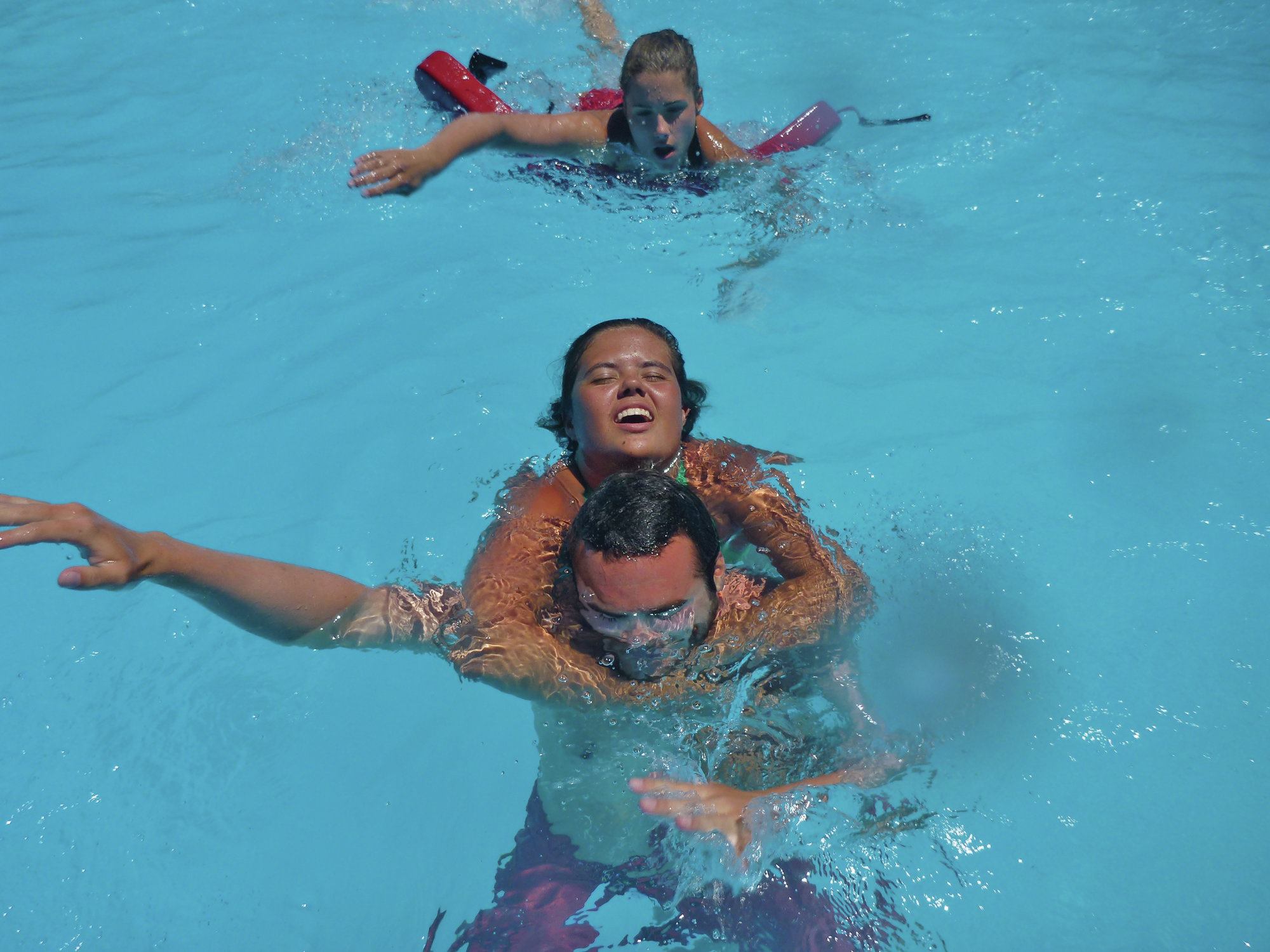The active rescue has always been the staple of lifeguarding. The results of the rescuers’ actions are immediate. If the rescue is successful, the victim immediately calms down and, once to safety, can’t thank you enough for your efforts. It’s the most direct way a new lifeguard can understand the importance of their role as the rescuer.
Here are the tenets of the lifeguard for the active victim rescue:
• Get to the victim as quickly and safely as possible
• Always take rescue equipment
• Never lose visual contact with the victim
• Make contact with victim from behind; it is safer than from the front
• Understand that active victims can be on the surface as well as submerged
• Identify yourself to reassure the victim, and move to safety
Once the lifeguard staff has become proficient in the skills of the active rescue, try including some of the following alternatives to the traditional drills to push physical and mental limits. Multiple rescue routes and obstacles, and multiple-victim drills challenge the rescuer’s speed, proficiency and ability to make critical decisions.
Multiple Routes Drill
Have two rescuers start from one lifeguard station. The primary rescuer will travel to the victim in a direct line of sight. The secondary rescuer will use an alternate route to get to the victim. The victim should be on the boundary of the zone of coverage.
Objective: Both rescuers must make contact with the victim as quickly and safely as possible.
Timing goal: 10-15 seconds to make contact.
This drill tests the boundaries of the zone of coverage and helps determine whether the most direct route to the victim is the quickest. Rescuers should feel comfortable experimenting with the quickest route, which could consist of a combination of travel on land and in the water. Move the victim throughout the entire zone to see if the outcome changes as to which rescuer gets to the victim first.
Multiple routes variations:
Stagger the response of one of the primary or secondary rescuers by 5 seconds (no time change)
Victim is actively submerged, just below the surface (no time change)
Victim is actively submerged, at least 3 feet underwater (add 5 seconds)
Obstacle Drill
Position the victim in a location in the swim area that has a fixed obstacle/s (i.e., lane lines, swim ropes, play features) that will impede the rescuer from making a direct line of sight rescue. Obstacles also could be mobile (i.e, floats, noodles and patrons).
Objective: Make contact with the victim as quickly and safely as possible.
Timing goal: 10-15 seconds to contact.
If the lifeguard station is a fixed stand, the rescuer should be comfortable going over, under and around the obstacles to get to the victim.
If the rescuer is at a roaming station, he or she should be proactive in modifying their position within the zone of coverage to minimize the amount of obstacles that will be in direct path of the victim.
Obstacle variations:
Rescuer can’t touch any fixed obstacles when making the rescue (add 5-10 seconds)
Rescuer can’t touch any mobile obstacles when making the rescue (add 5 seconds)
If patrons are used as the obstacles, have them moving (add 5 seconds)
Practice obstacle drill in a moving aquatic environment: lazy river, wave pool, etc. (add 5-10 seconds)
Include a combination of no-touch obstacles/moving obstacles/moving water (add 10 seconds or more)
Multiple active victims present unique challenges to the individual rescuer. Factors that should be considered for all rescues include water depth, size of the victims, and the victims’ activity level. The rescuer’s approach and strategy will depend on how the victims present themselves (both holding each other, one on the other’s back, or both separate but drowning).
Personal safety is paramount when dealing with multiple victims. If available, additional rescue equipment and rescuers should be utilized. Prior to training on multiple-victim rescues, review proper escape techniques. Also, it is imperative that a safety word and a safety tap/pinch be established in case of equipment entanglement or the rescuer being unable to escape from the victim(s).
Multiple-victim rescue training should start in shallow water (3-5 feet), with victims displaying appropriate behavior for this environment. The training should transition to mid-depth (5-9 feet), then to deep water (+9 feet).
Multiple Victims Drill
Have two victims holding and facing each other in shallow water
Objective: Make contact with the victims as quickly and safely as possible and secure the situation, either by calming the victims or getting assistance from another rescuer.
Timing goal: 10-15 seconds.
Once rescuers are proficient with the drill, try the variations listed below. All the variations can be done in shallow, mid-depth, or deep water, depending on the size of the victims.
A victim is piggybacking the other victim (no time change)
Two victims are close to each other (within arm’s distance), but drowning separately (add 5 seconds)
Victims are seesawing in the water (one up and one down) back and forth (no time added)
Both victims are too large to be supported by a single rescue tube. Rescuer needs to secure one victim and call for an additional lifeguard to assist (add 5 seconds)
Both victims are active, submerged either just under the surface or at least 3 feet under (add up to 10 seconds)
Rescuer makes one rescue at a time, securing one victim to safety, then rescuing the second victim (add up to 15 seconds)
Active victim rescues can be challenging and rewarding. They are an immediate way for you to assess your lifeguard team’s abilities. Speed and safety are integral in active rescue deployment and should be consistently emphasized.




